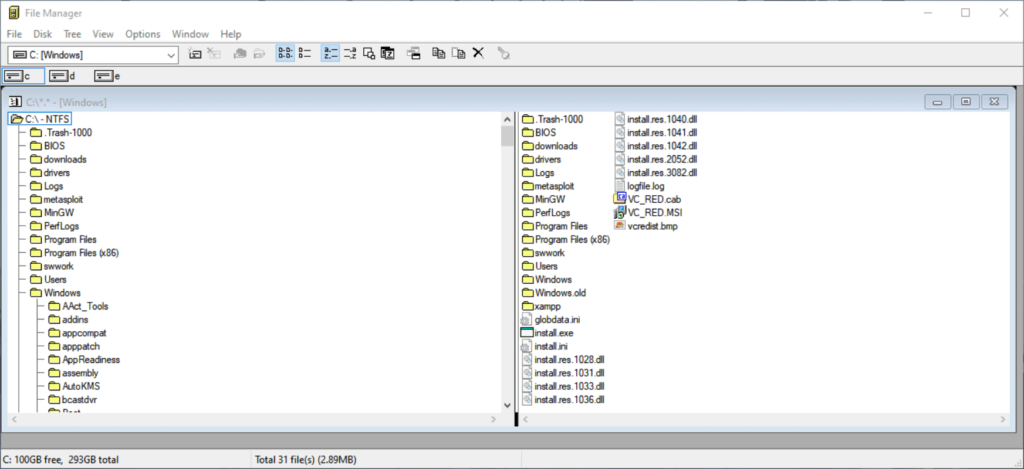What are DLL files and why they are crucial?
Dynamic link library, DLL, is a file format that is used to hold multiple procedures and codes for windows programs.
The Dynamic-link library is an application extension and has common codes between many applications. For instance, Microsoft Office comes preloaded with many DLL files that provide additional functionality for the Word, Excel, PowerPoint, and Access applications.
Even though they are popular in Windows, they are also present in Unix and Linux and are commonly referred to as shared libraries. A programme loads a DLL at startup or when it is a dependency on another DLL using the Win32 API LoadLibrary. A programme utilises the GetProcAddress or LoadResource methods to load a function or a resource.
These files were created to make it possible for multiple programs to use the information simultaneously so that memory conservation is aided in the end. The files also make it possible for users to edit coding for multiple applications simultaneously without necessarily changing the applications. The files contain data, codes and resources and they come with several advantages.
Benefits of DLL files
They save memory
This is because the files can share a single DLL copy in memory. It eliminates the need for Windows to load a copy of library code for every application in memory as it is usually the case with static link library. The DLL files also reduce swapping, thus making the execution of tasks much easier and faster.
They save on disk space.
This is also as a result of the possibility of sharing a single DLL copy on the disk rather than having a library code for every application built with a static link library to create executable images for separate copies.
DLL makes upgrades very easy.
Unlike statically linked object codes that need relinking when there is a change in function, applications using DLL do not need to be relinked or recompiled so long as function return values and arguments remain unchanged.
They offer reliable after-market support.
This is made possible by the fact that the display driver on the dynamic link library can be modified easily to support display that was not initially there when the application was shipped. Users, therefore, need not be left out when it comes to keeping up with the latest and enjoying the superior support they may need.

DLL makes it easy to create international versions.
This is because resources can easily be placed into a dynamic link library, making it easy for international versions of a given application to be created. Users simply need to place strings for every language version of the application in separate DLL resources and different language versions load to the appropriate resources.
The files support multi-language programs.
The same DLL function can be used for programs written in various programming languages as long as the programs follow the function’s calling convention. The DLL function and programs should be compatible in order of function arguments to be pushed onto the stack, function responsibility in cleaning up stack and arguments passed in registers.
Using DLL, it is possible to extend MFC library classes and place them into MFC extension DLL so MFC applications can use them. There is really so much that can be done using DLL files and the many advantages of this link library is what makes them very popular among users.
DLLs are so similar to EXEs that they share the same file format. Both EXE and DLLs use the Portable Executable (PE) file format. COM components and.NET libraries can also be found in DLLs. An EXE or other DLL utilises a DLL, which contains functions, classes, variables, UIs, and resources (such as icons, pictures, files, etc.).
There are two types of libraries on almost all operating systems. There are two types of libraries: static and dynamic. The file extensions in Windows are static libraries (.lib) and dynamic libraries (.dll) (.dll). Static libraries are linked to the executable when it is being built, but dynamic libraries are not linked to the executable until it is being run. Static libraries, on the other hand, are not generally visible on your computer since they are incorporated directly into a module (EXE or DLL). A dynamic library is a single-file application.
A DLL can be modified at any moment and is only loaded at runtime when an EXE specifically requests it. Once compiled into the EXE, a static library cannot be modified. It is possible to update a DLL without having to update the EXE.
Conclusion
DLL files are extremely useful for the Windows operating system. They serve as support for the functions. It contains Windows’s information. If a DLL is missing, your application will not function properly. Occasionally, the DLL files may also change with the system version. Due to the dependence of DLL files on Windows system functions, DLL files cannot be deleted directly. The system automatically deletes the DLL files when they are no longer in use.